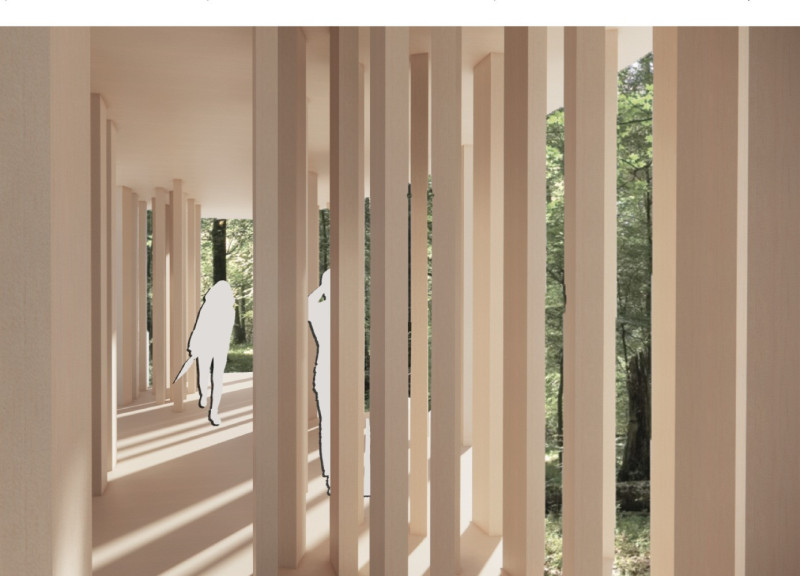5 key facts about this project
The design focuses on the theme of forest health and sustainable building practices, located in the Pacific Northwest. The project, named "PATHWAY," aims to establish a connection between the natural environment and human activities through an engaging architectural framework. It offers educational experiences that allow visitors to interact with the forest ecosystem and gain insights into ecological issues.
Conceptual Framework
PATHWAY acts as both a physical structure and a guiding concept. Central to the design is a pathway that meanders through a collection of glulam trees, which facilitates interaction between visitors and the landscape. The arrangement enhances visual appeal while underscoring the benefits of glulam. This material is recognized for its strength and adaptability, making it suitable for creating an inviting atmosphere that encourages reflection and exploration.
Sustainability and Education
The project features exhibit plinths that present discussions on healthy forests, construction methods, and the prospects for architecture. These elements engage visitors in meaningful conversations about sustainability and the effects of design choices on the environment. By providing educational content, the project promotes a deeper understanding of the connections between human design and forest ecosystems.
Contextual Relevance
The Pacific Northwest context plays a significant role in shaping the design approach. The region has faced climate changes, such as increasing wildfires and shifting ecosystems, which inform the emphasis on adaptability. The pavilion's design supports modular construction, allowing for easy transport and reassembly. This aspect highlights the project's ability to respond to different environmental scenarios.
Careful Integration
Throughout the design, attention is given to creating areas that invite both contemplation and interaction with nature. The glulam trees form a canopy that complements the pathway and offers sheltered spots for resting. This detail enhances the user experience and strengthens the connection to the environment, reflecting the relationship between architectural space and the natural surroundings.



















































